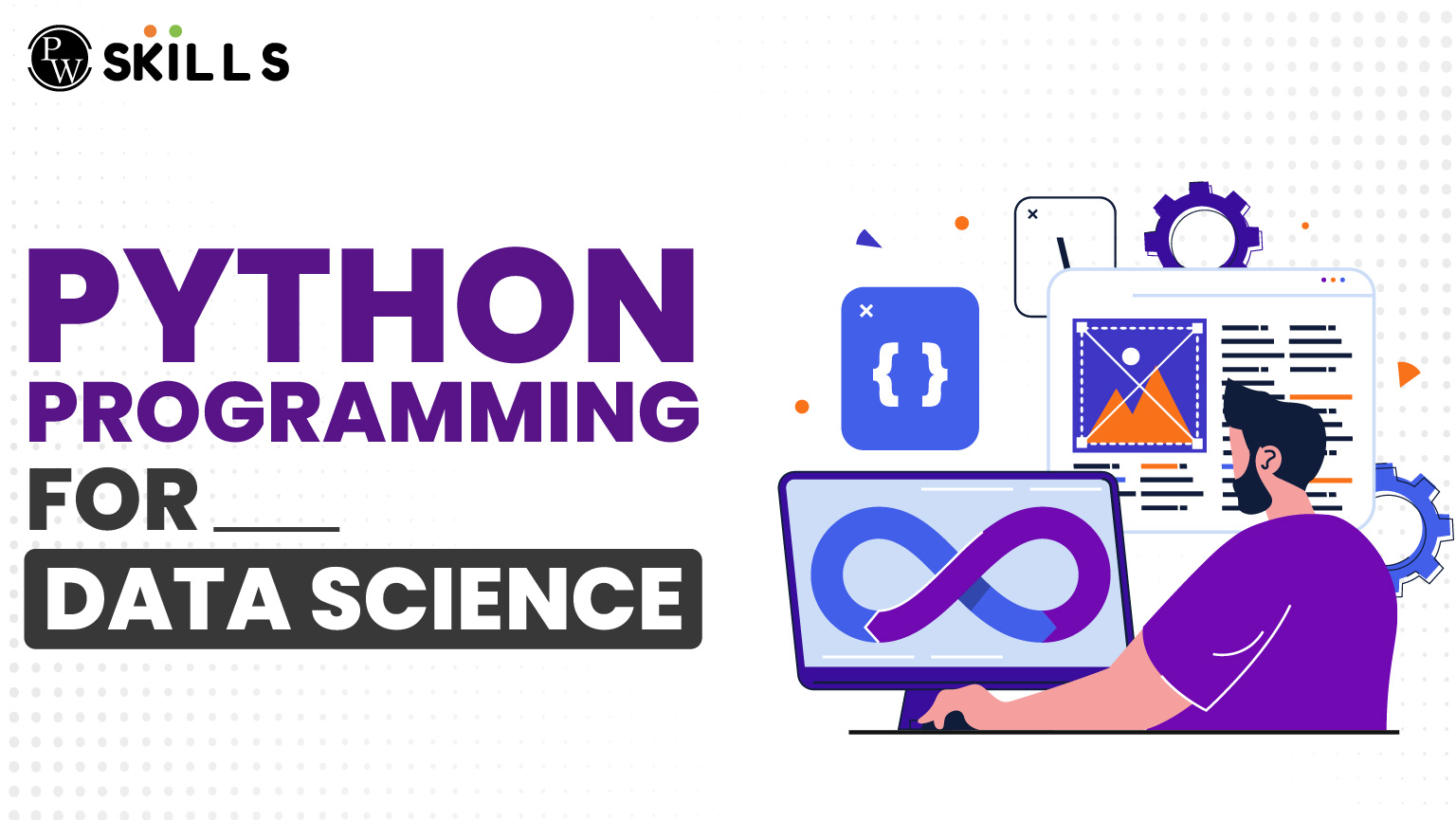Why python is the right language to learn particularly when it comes to data science? If you are here to know the answer then you are at right place. There is a whole bunch of languages and technologies out there why is python the reason or why is python the language that you should be learning. We will be taking a look at Python programming for Data Science. You will explore bunch of different types of python environments, and roadmap to master python, and will know why python programming for data science. Let’s go on ahead and start taking a look at why we should be learning python.
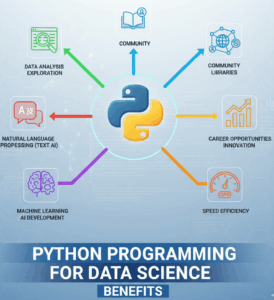
Why You Should learn Python
There are different languages out there. People starting to do data science in Javascript. But why is python the language one should use fro Data Science let us see some statistics. Below is the github octoverse statistics and it’s got a lot of information about languages that are really popular.
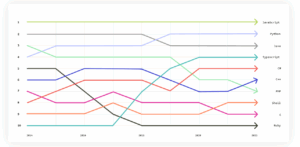
The above chart shows you what are the most popular languages out there so at the top we have javascript.
- Javascript is a great language when it comes to building web applications and building back-end servers and front-end applications.
It is followed very closely by that is python.
- In Python there’s a whole heap of development and innovation that’s being done inside of the python universe.
- If you go through a bunch of github repositories you’ll actually notice that python is number two in this particular case but it is number one for machine learning.
The strong motivation to learn Python programming for data science is the massive popularity that this language has acquired: it has the largest, most active community contributing its code and tools. Most of these resources, like in-depth python programming for data science notes, are easily accessible for mastering the language.
Python: The Ultimate Toolkit for Data Science, Machine Learning and AI
Python is not just the language of programming, but it is also a strong platform for Data Science, Machine Learning (ML) or Deep Learning (DL). It has very specialized software packages (libraries) built into it for all these requirements. Lets explore few of them.
The Python Package Index (PyPi): Python Library
PyPi is is essentially the app store or central catalog for Python software.
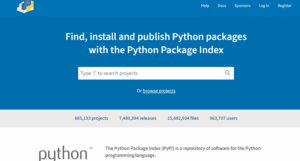
In simple terms PyPi is a big place in the cloud that has a whole bunch of different python libraries. From libraries you can choose to use for your different projects.
For example:
- You wanted to make an api call
- You wanted to buy a web scraper
PyPi finds the library that you’re going to need in here. It means you don’t have to start from scratch.
There are 685,133 projects. Moreover there are tons of releases, files and users. This massive, free libraries of code is why you can often find entire toolkits for python programming for data science free download.
Scikit-learn: Python Library
The libraries in Python provide a strong base and are highly used for analysis and machine learning applications:
Scikit-learn (most often used along with Pandas): The mainstay library used in building standard predictive models.
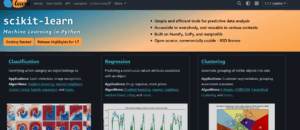
With Scikit-learn you can build:
- Classification models: Software that processes and sorts data into categories (like deciding whether an email is “spam” or “not spam”).
- Regression model: Software that finds patterns in data and assigns a numerical value to the prediction (like predicting the price of a house).
- Clustering and Dimensionality reduction: Methods for finding patterns in the data and simplifying analysis in large datasets.
Inside of python via Scikit-learn again with pandas super popular library you’ve got the ability to so much innovation happening in this environment.
The Deep Learning Revolution
Inside the Python universe, the most exciting aspect is the state of innovation in deep learning, made possible by these colossal libraries:
TensorFlow: Tensorflow is built by the google team and it allows you to build a deep neural network. If you have seen any major achievements in AI (like advanced image recognition or language understanding), chances are high that those systems were built using a framework such as this.
Pytorch: Python Library
Pytorch by the Meta (Facebook) team and stands with TensorFlow among very popular and powerful deep-learning libraries. It is known for flexibility and has been preferred mostly for academic and research work because of its dynamic way of doing things.
Pytorch is different among such commands as TensorFlow due to several key features:
- Dynamic graphs (define-by-run): This is PyTorch’s signature feature. In other systems where one has to draw the full blueprint of their model beforehand, but PyTorch allows you to build and change the model as you go with it to simplify debugging.
- GPU acceleration: PyTorch handles the tensor (multi-dimensional array of data- for example, a large table filled of numbers) much like in the NumPy, but its key feature, unlike NumPy, is the ability to accelerate computations by using your computer’s GPU (Graphics Processing Unit).
PyTorch is a foundational tool used by major companies and universities for serious research and deployment in Python programming for data science.
Natural Language Processing: Computers Can Talk
Natural Language Processing (NLP) is basically brain of AI, which in Python programming for data science:
- Gives computers the ability to read, understand, and generate human languages.
- Powers every language tool that we use in our daily life, from smart voice assistants like Siri and Alexa to tools such as Google Translate.
- Spam filters for email.
In simple terms, NLP takes the complex, disorganized texts, and speech of human conversation and converts them into forms that a machine can analyze and act upon.
Core NLP Libraries in Python
Python is the ultimate NLP language; the libraries hold a complete set of powerful tools for every language task:
Natural Language Toolkit: This library is often the first to be introduced to beginners and researchers. It helps with basic operations such as tokenization (breaking text into words) and sentiment analysis (checking whether a given text is positive or negative).
spaCy: spaCy was made for the real world and for speed, hence making it suitable for the apps that process large amounts of text efficiently, such as key person and place extraction (Named Entity Recognition).
Hugging Face Transformers: A library that is quickly gaining traction, specifically in the fields of Natural Language Processing (NLP). It allows you to work with state-of-the-art models that can:
- Generate either text or code (acting as a chatbot or coding assistant).
- Classify and comprehend large blocks of human language.
Python Programming for Data Analysis
While Scikit-learn focuses on the models, Python has some other core libraries assisting with the preparation, management, and visualization of your data. These libraries could be found in almost every single python programming for data science project:
NumPy (Numerical Python) is the base or foundation of any higher numerical or scientific computations in Python. It gives well-optimized tools for creating and manipulating large arrays and matrices of numbers.
Any task for data analysis is incomplete without this library. It gives data structures that are easy to work with, the most famous is the DataFrame, which looks and acts like a flexible spreadsheet or an SQL table. With Pandas, one can quickly clean, transform, manipulate, and analyze structured data.
Matplotlib and Seaborn
The following two libraries are primary visualization tools:
- Matplotlib: The classic library for making static, interactive, and animated plots and graphs.
- Seaborn: A library built on top of Matplotlib that provides a high-level interface for drawing attractive and informative statistical graphics (e.g., heat maps and violin plots).
Python Programming for Data Science: Library Functions
The libraries work on on ready-made functions for complex work, including data cleaning, data analysis, data visualization, and machine learning models involving building. The table below has a quick reference of the most commonly used functions-from beginner basics to advanced operations-that can smoothen out any of your activities in data science.
| Library | Category | Common Functions/Features | Use Case in Data Science |
| NumPy | Numerical Computing | array(), reshape(), mean(), std() | Fast numerical operations, handling arrays and matrices |
| Pandas | Data Analysis | DataFrame(), read_csv(), groupby(), merge() | Data cleaning, manipulation, and analysis |
| Matplotlib | Data Visualization | plot(), scatter(), hist(), bar() | Creating charts, plots, and visualizations |
| Seaborn | Advanced Visualization | heatmap(), pairplot(), boxplot(), countplot() | Statistical and attractive visualizations |
| Scikit-learn | Machine Learning | fit(), predict(), train_test_split(), classification_report() | Building and testing ML models |
| TensorFlow | Deep Learning | tf.constant(), tf.Variable(), keras.Model(), GradientTape() | Training and deploying neural networks |
| PyTorch | Deep Learning | torch.tensor(), nn.Module(), optim.SGD(), autograd.grad() | Research, prototyping, and production-level AI/ML |
| Statsmodels | Statistical Analysis | ols(), anova_lm(), logit(), summary() | Advanced statistical models and hypothesis testing |
| PyPI | Package Management | pip install <package> | Central repository to install and manage all Python libraries |
Why Libraries in Python Programming for Data Science
Such presence of powerful libraries, all constantly kept up to date-from libraries enabling data science to using deep learning frameworks-is precisely what has made Python a language of choice for anything related to AI and machine learning today.
Python Programming for Data Science Reddit
You’re in the right place if you’re actually looking for learning python programming for data science because we have discussed how powerful python is and how much it needs specialized libraries for modern AI. So let’s finish by showing how a global community-such as reddit-help beginners. When you are ready with proper python programming for data science free download resources, it is that first step but, having great notes of python programming for data science from experienced count as part of the journey.
Python’s Roadmap to Data Science Mastery
A clear two-step recommendation made through the community about mastering python programming for data science:
- Build a Solid Python Foundation
- Core Basics First: Master foundational concepts such as variables, loops, conditional statements, and functions.
- Data Structures: Learn essential Python structures such as lists, dictionaries, and tuples.
- Explore Essential Data Science Libraries
- Data Handling: Emphasis on Pandas for proficient data manipulation and pillar on NumPy for numerical operations.
- Modeling: When ready, incorporate Scikit-learn into your toolset for constructing typical machine learning models.
- Visualization: Use Matplotlib and Seaborn for creating impressive data visualizations.
- Prominent Key Learning Strategies
- Learning Resources: Or structured courses and books like Python for Data Analysis, to take python programming for data science notes.
- Practice Resources: Kaggle and StrataScratch for example datasets and hands-on sample projects.
- Start Building: Get to work on your project right away; it speeds up learning by connecting things with real-world problems.
- Free Resources: Remember, open-source communities have many ready-to-go complete toolkits, including ones on python programming for data science free download.
Master Python Programming for Data Science with PW Skills
Ready to jump into the most in-demand field in tech? The PW Skills Data Science course provides you with a structured roadmap to master python programming for data science from scratch. Stop running around searching for temporary advices about python programming for data science notes. Enroll today, and unlock the python programming for data science free download resources you need to accelerate your journey.
Yes, Python is the easiest and most versatile language for beginners with a simple syntax and powerful libraries such as NumPy and Pandas. Yes, tons of resources such as blogs, tutorials, and GitHub repositories offer free material to learn. Some courses also offer free downloadable PDFs for Python programming for data science. With consistent practice for about 3-6 months, a beginner can get job-ready, focusing mainly on projects. Basic statistics and linear algebra are helpful, but with Python libraries such as NumPy and Pandas, you can start analyzing data without advanced mathematics.FAQs
Is Python programming good for data science beginners?
Can I learn Python programming for data science free of cost?
How long does it take to master Python for data science?
Is math required for Python data science?

